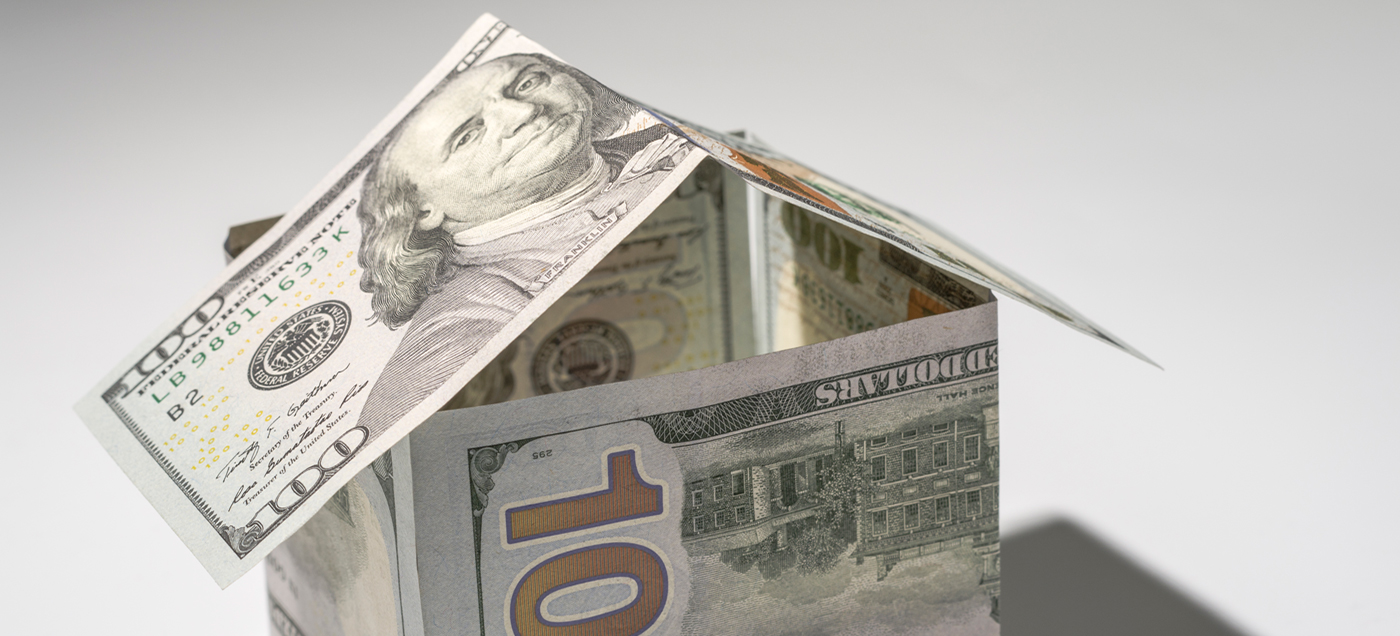Residential Real Estate News

U.S. Median Home Price Jumps 23 Percent to $357,900 in Q2
Residential News » Washington D.C. Edition | By WPJ Staff | August 13, 2021 8:03 AM ET
An increase of $66,800 from one year ago
According to the National Association of Realtors latest quarterly housing report, persistent low-levels of housing inventory, combined with record-low mortgage rates spurring housing demand, have caused an increase in median sales prices for existing single-family homes in all but one of 183 measured markets during the second quarter of 2021. NAR's report also reveals that 94% of 183 U.S. metro areas also experienced double-digit price increases (89% in the first quarter of 2021).
The median sales price of single-family existing homes rose 22.9% to $357,900, an increase of $66,800 from one year ago. All regions saw double-digit year-over-year price growth, which was led by the Northeast (21.8%), followed by the South (21.0%), West (20.9%), and Midwest (17.1%).
"Home price gains and the accompanying housing wealth accumulation have been spectacular over the past year, but are unlikely to be repeated in 2022," said Lawrence Yun, NAR chief economist.

"There are signs of more supply reaching the market and some tapering of demand," he continued. "The housing market looks to move from 'super-hot' to 'warm' with markedly slower price gains."
That said, 12 metro areas did report price gains of over 30% from one year ago, eight of which are in the South and West regions, including Pittsfield, Mass. (46.5%); Austin-Round Rock, Texas (45.1%); Naples-Immokalee-Marco Island, Fla. (41.9%); Boise City-Nampa, Idaho (41%); Barnstable, Mass. (37.8%); Boulder, Colo. (37.7%); Bridgeport-Stamford-Norwalk, Conn. (37.1%); Cape Coral-Fort Myers, Fla. (35.6%); Tucson, Ariz. (32.6%); New York-Jersey City-White Plains, N.Y.-N.J. (32.5%); San Francisco-Oakland-Hayward, Calif. (31.9%); and Punta Gorda, Fla. (30.8%). Yun notes that home prices are increasing sharply in the San Francisco and New York metro areas.
Over the past three years, the typical price gain on an existing single-family home totaled $89,900, with price gains in all 182 markets. In 46 out of 182 markets, homeowners typically experienced price gains of over $100,000. The largest price gains were in San Francisco-Oakland-Hayward, Calif. ($315,000); San Jose-Sunnyvale-Sta. Clara, Calif. ($294,000); Anaheim-Sta. Ana Irvine, Calif. ($279,500); Barnstable, Mass. ($220,600); and Boise-City-Nampa, Idaho ($206,300).
With home prices rising, the monthly mortgage payment on an existing single-family home financed with a 30-year fixed-rate loan and 20% down payment rose to $1,215. This is an increase of $196 from one year ago. The monthly mortgage payment grew even as the effective 30-year fixed mortgage rate decreased to 3.05% (3.29% one year ago). Among all homebuyers, the monthly mortgage payment as a share of the median family income rose to 16.5% in the second quarter of 2021 (14.0% one year ago).
"Housing affordability for first-time buyers is weakening," Yun explained. "Unfortunately, the benefits of historically-low interest rates are overwhelmed by home prices rising too fast, thereby requiring a higher income in order to become a homeowner."
Among first-time buyers, the mortgage payment on a 10% down payment loan jumped to 25% of income (21.2% one year ago). A mortgage is affordable if the payment amounts to no more than 25% of the family's income.
In 17 metro areas, a family needed more than $100,000 to affordably pay a 10% down payment mortgage (14 metro areas in 2021 Q1). These metro areas are in California (San Jose-Sunnyvale-Sta. Clara, San Francisco-Oakland-Hayward, Anaheim-Sta. Ana-Irvine, San Diego-Carlsbad, Los Angeles-Long Beach-Glendale), Hawaii (Urban Honolulu), Colorado (Boulder, Denver-Aurora), Washington (Seattle-Tacoma-Bellevue), Florida (Naples-Immokalee-Marco Island), Connecticut (Bridgeport-Stamford-Norwalk), New York (Nassau, New York-Newark-Jersey City), Massachusetts (Boston, Barnstable), District of Columbia-Virginia-Maryland-West Virginia (Washington-Arlington-Alexandria), and Oregon-Washington (Portland-Vancouver-Hillsboro).
There were only 84 metro area markets in which a family needed less than $50,000 to afford a home, down from 104 markets in 2021 Q1. The most affordable markets - where a family can typically afford to buy a home financed with a 10% down payment with an income of $25,000 or less - are in the Rust Belt areas of Youngstown-Warren Boardman, Ohio ($24,401); Peoria, Illinois ($24,013); Cumberland, Maryland ($23,773); and Decatur, Illinois ($21,481).
"Housing supply will be critical in moderating the growing housing costs and rising rents," Yun said. "Any disincentive to produce more housing inventory, such as extending the eviction moratorium, will only worsen the current shortage," Yun said.
Yun noted that NAR has requested "expeditious release" of rental subsidy funds in order to assist those who may be facing eviction.
Sign Up Free | The WPJ Weekly Newsletter
Relevant real estate news.
Actionable market intelligence.
Right to your inbox every week.
Real Estate Listings Showcase
Related News Stories
Residential Real Estate Headlines
- U.S. New-Home Sales Surge in August as Mortgage Rates Ease
- Despite Increased Foreign Buyer Activity, Miami Residential Sales Dip 11 Percent in August
- California Home Sales Enjoy Modest Uptick as Mortgage Rates Ease
- U.S. Home-Flipping Profits Sink to Lowest Level Since 2008 Financial Crisis as Costs Climb
- Why the World's Rich Are Flocking to Europe in 2025
- Federal Reserve Delivers First Rate Cut of 2025 as Mortgage Relief Proves Limited
- Homebuilder Sentiment Holds Steady in U.S. as Rate-Cut Bets Lift Outlook
- U.S. Mortgage Rates Experience Sharpest Weekly Drop in Over a Year
- U.S. Foreclosures Rise for Sixth Straight Month as Affordability Pressures Mount
- Black U.S. Homeownership Rate Falls to Two-Year Low as Job Losses Mount
- Las Vegas Home Prices Flatten as Listings Surge, Sales Slow
- Cooling Miami Housing Market Sees 16 Percent Annual Sales Drop in July
- U.S. Mortgage Delinquencies Uptick in June Amid Regional Pressures
- California, Florida Top U.S. Housing Markets Most at Risk of Downturn
- 30-Year Mortgage Drops to 6.56 Percent in Late August, Lowest Since October 2024
- Investors Maintain Elevated Role in U.S. Housing Market Despite Slight Pullback
- Pending Home Sales Show Mixed Signals as U.S. Buyers Remain Cautious
- Canadian Home Sales Extend Recovery in July
- U.S. Home Sales Rise in July as Buyers Gain More Bargaining Power
- Zombie Foreclosures Edge Up Across U.S.
- 2.6 Million Homes at Wildfire Risk Across 14 Western States in 2025
- One in Five Americans Willing to Trade Personal Safety for Home Affordability
- U.S. Home Price Growth Slows as Affordability Pressures Mount in 2025
- U.S. Mortgage Rates Dip to Four Month Low in Early August
- U.S. Mortgage Applications Rise in Late July, Breaking Four-Week Slump
- Hong Kong's Housing Market Stuck in Stalemate as Bulls and Bears Face Off
- U.S. Condo Market Struggles in 2025
- U.S. Pending Home Sales Remain Sluggish in June
- Los Angeles Area Wildfires Destroyed Nearly $52 Billion in Homes Last January
- Greater Palm Beach Area Residential Sales Slip in June Amid Growing Inventory
- Economic Resilience Lifts U.S. Housing Outlook Going Forward
- New Home Sales Stagnate as Affordability Struggles Continue in America
- U.S. Housing Market Slips in June as Prices Hit New Highs
- Florida, California Continue to Reign Supreme as America's Ultraluxury Housing Markets
- Caribbean Housing Market Evolves into Global Second-Home Hotspot
- U.S. Home Sales See Highest June Cancellation Rate on Record
- Orlando Housing Market Cools in June as Listings Slide, Sales Slow
- Private Credit Surges in 2025 as Real Estate Developers Bypass Banks
- U.S. Condo Market Suffers Sharpest Price Drops in Over a Decade as Buyers Retreat
- Rising Taxes, Insurance Costs Undermine the Stability of U.S. Homeownership







